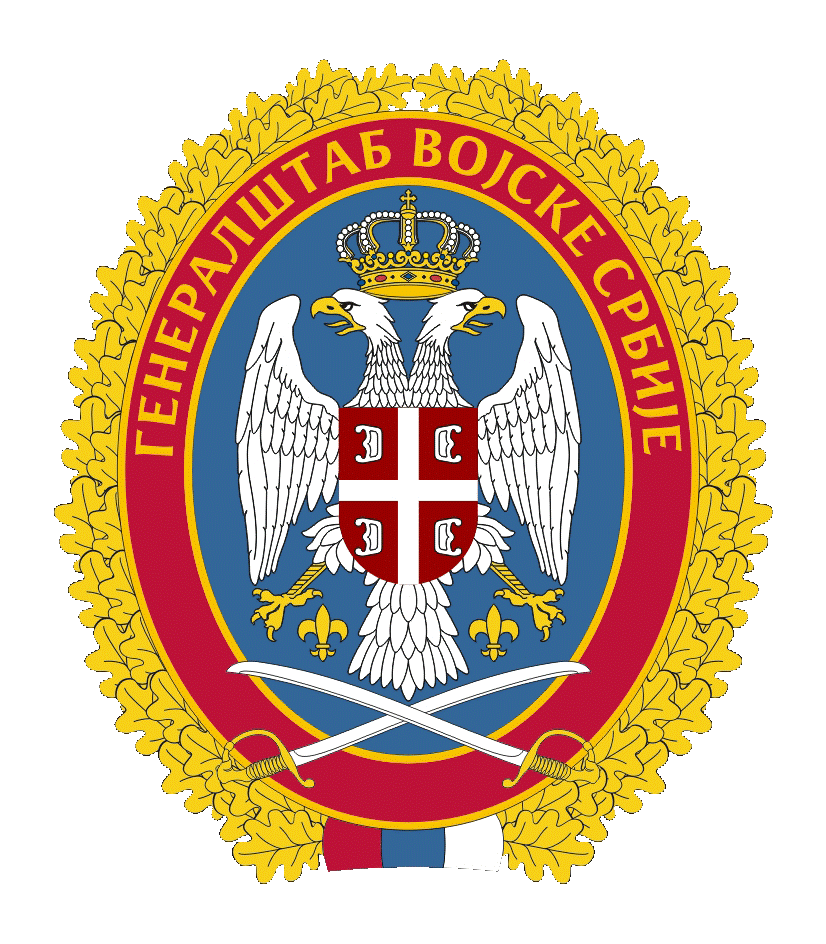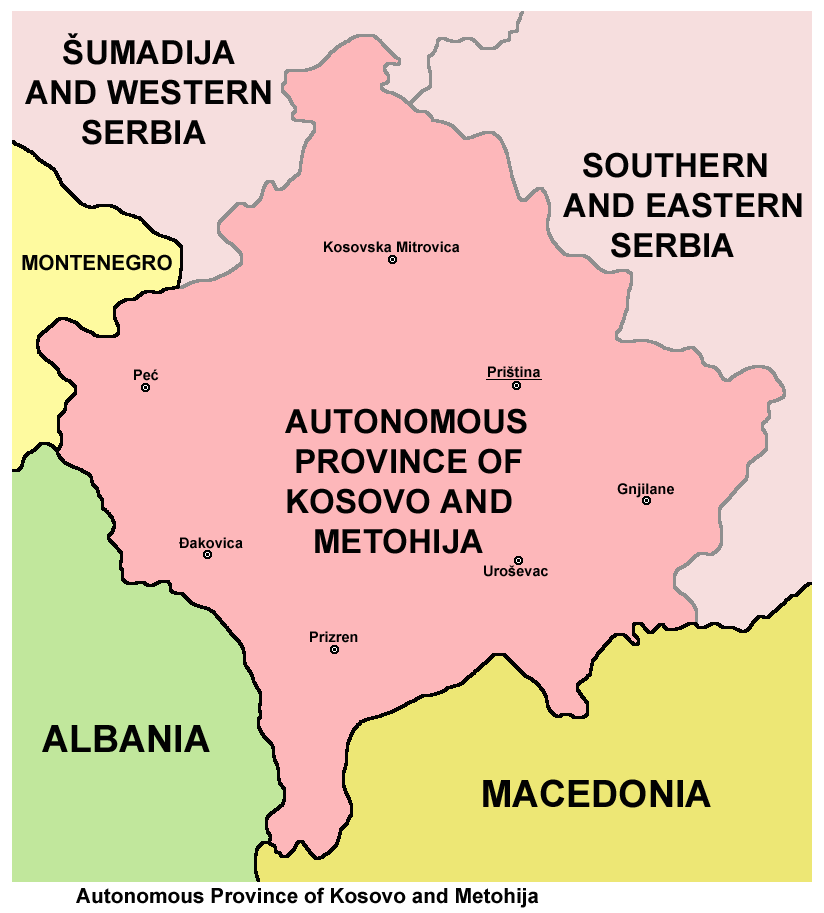|
Joint Operations Command (Serbia)
Joint Operations Command ( sr, Здружена оперативна команда, Združena operativna komanda) is an organizational unit of the Serbian General Staff which conducts operational command of the Serbian Armed Forces. Missions Although Joint Operations Command’s main function is to command, it also performs tasks including planning, organizational, control and operational function. The main duties include: * planning crisis response operations * commanding forces engaged in operations * planning the use of forces * commanding and monitoring the engagement of Serbian Armed Forces units in multinational operations Structure The Joint Operations Command has a flexible formation, which is expanded by representatives of other organizational units of the General Staff, and, if there is a need, operational level commands. In peacetime, its commander is also Deputy of the Chief of the General Staff. The units directly subordinate to the Joint Operations Command are ... [...More Info...] [...Related Items...] OR: [Wikipedia] [Google] [Baidu] |
Kosovo Force
The Kosovo Force (KFOR) is a North Atlantic Treaty Organization, NATO-led international NATO peacekeeping, peacekeeping force in Kosovo. Its operations are gradually reducing until Kosovo Security Force, Kosovo's Security Force, established in 2009, becomes self sufficient. KFOR entered Kosovo on 11 June 1999, two days after the adoption of UN Security Council Resolution 1244. At the time, Kosovo was facing a grave humanitarian crisis, with Military of Serbia and Montenegro, military forces from Serbia and Montenegro, Yugoslavia in action against the Kosovo Liberation Army (KLA) in daily engagements. Nearly one million people had fled Kosovo as refugees by that time, and many did not permanently return. KFOR is gradually transferring responsibilities to the Kosovo Police and other local authorities. Currently, 28 states contribute to the KFOR, with a combined strength of approximately 4,000 military and civilian personnel. The mission was initially called Operation Joint Guardi ... [...More Info...] [...Related Items...] OR: [Wikipedia] [Google] [Baidu] |
Pristina
Pristina, ; sr, / (, ) is the capital and largest city of Kosovo. The city's municipal boundaries in Pristina District form the largest urban center in Kosovo. After Tirana, Pristina has the second largest population of ethnic Albanians and speakers of the Albanian language. Inhabited by humans since prehistoric times, the area of Pristina was home to several Illyrian peoples. King Bardyllis of the Dardanians brought various tribes together in the 4th century BC and established the Dardanian Kingdom.''The Cambridge Ancient History: The fourth century B.C.'' Volume 6 of The Cambridge Ancient History Iorwerth Eiddon Stephen Edwards, , , Authors: D. M. Lewis, John Boardman, Editors: D. M. Lewis, John Boardman, Second Edition, Cambridge ... [...More Info...] [...Related Items...] OR: [Wikipedia] [Google] [Baidu] |
Autonomous Province Of Kosovo And Metohija
The Autonomous Province of Kosovo and Metohija ( sr, Косово и Метохиja, Kosovo i Metohija; sq, Kosova dhe Metohija), commonly known as Kosovo and abbreviated to Kosmet or KiM, is an autonomous province defined by the constitution of Serbia that occupies the southernmost part of Serbia. The territory is the subject of an ongoing political and territorial dispute between Serbia and the partially recognised, self-proclaimed Republic of Kosovo, the latter of which has control over the region. Its claimed administrative capital and largest city is Pristina. The territory of the province, as recognized by Serbian laws, lies in the southern part of Serbia and covers the regions of Kosovo and Metohija. The capital of the province is Pristina. The territory was previously an autonomous province of Serbia during Socialist Yugoslavia (1946–1990), and acquired its current status in 1990. The province was governed as part of Serbia until the Kosovo War (1998–99), when i ... [...More Info...] [...Related Items...] OR: [Wikipedia] [Google] [Baidu] |
FR Yugoslavia
Serbia and Montenegro ( sr, Cрбија и Црна Гора, translit=Srbija i Crna Gora) was a country in Southeast Europe located in the Balkans that existed from 1992 to 2006, following the breakup A relationship breakup, breakup, or break-up is the termination of a relationship. The act is commonly termed "dumping omeone in slang when it is initiated by one partner. The term is less likely to be applied to a married couple, where a brea ... of the Socialist Federal Republic of Yugoslavia (SFR Yugoslavia) which bordered Hungary to the north, Romania to the northeast, Bulgaria to the southeast, North Macedonia, Macedonia to the south, Croatia and Bosnia and Herzegovina to the west, and Albania to the southwest. The state was founded on 27 April 1992 as the Federal Republic of Yugoslavia, known as FR Yugoslavia or simply Yugoslavia which comprised the Republic of Serbia (1992–2006), Republic of Serbia and the Republic of Montenegro (1992–2006), Republic of Montenegr ... [...More Info...] [...Related Items...] OR: [Wikipedia] [Google] [Baidu] |
United Nations Security Council Resolution 1244
United Nations Security Council resolution 1244, adopted on 10 June 1999, after recalling resolutions 1160 (1998), 1199 (1998), 1203 (1998) and 1239 (1999), authorised an international civil and military presence in the Federal Republic of YugoslaviaMember States of the United Nations, UN.org "Serbia – date of admission 1 November 2000, The Federal Republic of Yugoslavia was admitted as a Member of the United Nations by General Assembly resolution A/RES/55/12 of 1 November 2000. On 4 February 2003, following the adoption and promulgation of the Constitutional Charter of Serbia and Montenegro by the Assembly of the Federal Republic of Yugoslavia, the official name of "Federal Republic of Yugoslavia" was changed to Serbia and Montenegro. In a letter dated 3 June 2006, the President of the Republic of Serbia i ... [...More Info...] [...Related Items...] OR: [Wikipedia] [Google] [Baidu] |
Ministry Of Internal Affairs (Serbia)
The Ministry of Internal Affairs of the Republic of Serbia ( sr, Mинистарство унутрашњих послова, Ministarstvo unutrašnjih poslova; abbr. MUP) or the Ministry of Interior, is a cabinet-level ministry in the Government of Serbia. The Ministry is responsible for local and national Police services with municipal and district branches throughout the country. Its core responsibilities include: crime prevention, criminal apprehension, investigations, customs and border control, counter-terrorism, anti-corruption, anti-narcotics and disaster relief. The ministry is also responsible for issuing passports and personal identification to citizens. The current minister is Bratislav Gašić, in office since 26 October 2022. As of August 2016, the Ministry of Internal Affairs has a total of 42,817 employees, of whom 28,266 are uniformed officers. Of those, 70.2% have secondary education, while 27.8% have higher or high education. Organization * Minister of Interi ... [...More Info...] [...Related Items...] OR: [Wikipedia] [Google] [Baidu] |
Yugoslav People's Army
The Yugoslav People's Army (abbreviated as JNA/; Macedonian and sr-Cyrl-Latn, Југословенска народна армија, Jugoslovenska narodna armija; Croatian and bs, Jugoslavenska narodna armija; sl, Jugoslovanska ljudska armada, JLA), also called the Yugoslav National Army, was the military of the Socialist Federal Republic of Yugoslavia and its antecedents from 1945 to 1992. Origins The origins of the JNA started during the Yugoslav Partisans of World War II. As a predecessor of the JNA, the People's Liberation Army of Yugoslavia (NOVJ) was formed as a part of the anti-fascist People's Liberation War of Yugoslavia in the Bosnian town of Rudo on 22 December 1941. After the Yugoslav Partisans liberated the country from the Axis Powers, that date was officially celebrated as the "Day of the Army" in the Socialist Federal Republic of Yugoslavia (SFR Yugoslavia). In March 1945, the NOVJ was renamed the "Yugoslav Army" ("''Jugoslavenska/Jugoslovenska Armija' ... [...More Info...] [...Related Items...] OR: [Wikipedia] [Google] [Baidu] |
Kumanovo Agreement
The Military Technical Agreement, also known as the Kumanovo Agreement, signed between the International Security Force (KFOR) and the Governments of the Federal Republic of Yugoslavia and the Republic of Serbia, was an accord concluded on 9 June 1999 in Kumanovo, Macedonia. It resulted in the end of the Kosovo War, and established new basic relations between Yugoslavia and the Kosovo Force, which would act to replace units of the Yugoslav Army in Kosovo. Background The run-up to the Kumanovo Agreement involved a flurry of negotiations not just between Yugoslavia and Serbia but also NATO and Russia. Despite the initial agreement, for instance, on a withdrawal timetable for the Serbian forces in Kosovo, NATO's Operation Allied Force was still underway, pending the completion of full withdrawal of the Serbian troops. There are sources that cite the role that Russia played in the immediate resolution of the accord. There was a claim about a meeting between Russian Foreign Ministe ... [...More Info...] [...Related Items...] OR: [Wikipedia] [Google] [Baidu] |
NATO
The North Atlantic Treaty Organization (NATO, ; french: Organisation du traité de l'Atlantique nord, ), also called the North Atlantic Alliance, is an intergovernmental military alliance between 30 member states – 28 European and two North American. Established in the aftermath of World War II, the organization implemented the North Atlantic Treaty, signed in Washington, D.C., on 4 April 1949. NATO is a collective security system: its independent member states agree to defend each other against attacks by third parties. During the Cold War, NATO operated as a check on the perceived threat posed by the Soviet Union. The alliance remained in place after the dissolution of the Soviet Union and has been involved in military operations in the Balkans, the Middle East, South Asia, and Africa. The organization's motto is ''animus in consulendo liber'' (Latin for "a mind unfettered in deliberation"). NATO's main headquarters are located in Brussels, Belgium, while NATO ... [...More Info...] [...Related Items...] OR: [Wikipedia] [Google] [Baidu] |
Serbian General Staff
The Serbian Armed Forces General Staff ( sr, Генералштаб Војске Србије, Generalštab Vojske Srbije) is the highest authority within the Serbian Armed Forces and a significant command entity with numerous organizaional units under its direct command. Missions General Staff possess operational authority over the armed forces. Its primary roles and responsibilities include: *developing the command structure *establishing a plan of recruitment and schedule for recruits *regulating training of the armed forces *establishing plans for education and training, *performing other tasks determined by law. Composition Members Members of five most senior ranking officers who make strategic and tactical preparations and procedures for use during peacetime and war. Associate members Associate members are heads of specific organizational structures within the General Staff. Structure There are various brigades and brigade-size entities directly subordinated to th ... [...More Info...] [...Related Items...] OR: [Wikipedia] [Google] [Baidu] |
Ministry Of Defence (Serbia)
The Ministry of Defence of Republic of Serbia ( sr, Министарство одбране, Ministarstvo odbrane) is the ministry in the Government of Serbia which is in the charge of defending the Republic of Serbia from internal and external military threats. The current minister is Miloš Vučević, in office since 26 October 2022. The Ministry uses Building "B" of the former Yugoslav Ministry of Defence building as its headquarters. Organization This is the organisation within the Ministry of Defence: *Minister of Defence **Cabinet of Minister ***Section for protocol **State secretaries ***Department for emergency situations ***Department for budget and finances **Department for public relations **General Staff **Defence Policy Sector ***Department for organization ***Department for strategic planning ***Department for international military cooperation ***Institute for Strategic Research **Secretariat ***Department for legal affairs ***Section for operational affairs ... [...More Info...] [...Related Items...] OR: [Wikipedia] [Google] [Baidu] |


